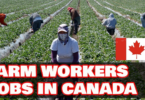Caregiver Jobs With Visa Sponsorship In Australia
Australia’s aging population and growing healthcare needs have created a significant demand for qualified caregivers across the country. For international workers seeking new opportunities abroad, Australia’s caregiver sector offers promising career paths with the possibility of visa sponsorship. This comprehensive guide explores everything you need to know about securing caregiver positions with visa sponsorship in Australia, from understanding the qualification requirements to navigating the visa application process and building a successful career in Australian healthcare.
The Australian healthcare system values skilled international workers who can bring diverse experiences and address critical workforce shortages. With the right qualifications, experience, and approach to job hunting, overseas caregivers can find rewarding opportunities that provide not only employment but also a pathway to living in one of the world’s most livable countries.
Understanding Caregiver Roles in Australia
Types of Caregiver Positions Available
The term “caregiver” encompasses various roles within Australia’s healthcare and social assistance sectors. Understanding these different positions is crucial for international applicants targeting specific career paths:
Aged Care Workers provide essential support to elderly Australians in residential care facilities or through home care services. Their responsibilities include assisting with daily activities like bathing, dressing, mobility support, medication reminders, meal preparation, and social engagement. The aging Australian population has created sustained demand for these professionals.
Disability Support Workers assist individuals with physical, intellectual, or developmental disabilities. They help clients achieve greater independence and quality of life through personalized care plans, which may include personal care, community access support, skill development, and emotional support.
Personal Care Assistants (PCAs) work in various healthcare settings including hospitals, rehabilitation centers, and private homes. They provide direct physical care and practical assistance to patients who require support due to illness, injury, disability, or age-related conditions.
Home Care Assistants deliver support services to clients in their own homes, helping them maintain independence while receiving necessary care. Services typically include housekeeping, meal preparation, transportation assistance, medication reminders, and companionship.
Respite Care Workers provide temporary relief to primary caregivers, allowing them essential breaks from their caregiving responsibilities. These professionals step in to maintain continuity of care while regular caregivers rest and recharge.
Work Settings for Caregivers
Australian caregivers work across diverse environments, each with its unique advantages and challenges:
Residential Aged Care Facilities (RACFs) are purpose-built centers where elderly residents receive 24-hour care. These facilities often have the highest concentration of caregiver jobs and frequently sponsor international workers.
Home Care Services involve traveling to clients’ homes to deliver personalized care. This setting offers greater variety in daily work but may require a valid driver’s license and reliable transportation.
Hospitals and Rehabilitation Centers employ caregivers as part of multidisciplinary healthcare teams. These settings typically have more structured protocols and offer opportunities to work alongside various healthcare professionals.
Disability Support Organizations provide services in both residential facilities and community settings. These organizations frequently seek caregivers with specialized skills in disability support.
Community Care Centers offer day programs and support services for various vulnerable populations. These centers provide important social connection opportunities alongside necessary care services.
Demand for International Caregivers
Australia faces significant workforce challenges in the care sector that create opportunities for overseas workers:
The Australian healthcare sector is experiencing critical staffing shortages, particularly in aged care and disability services. The Department of Health has identified caregiving roles as priority occupations for skilled migration, recognizing the immediate need for qualified personnel.
Regional and rural areas face particularly acute shortages, with many facilities struggling to maintain adequate staffing levels. International caregivers willing to work in these locations often find more sponsorship opportunities and potential pathways to permanent residency.
Australia’s aging population continues to grow, with projections indicating that by 2030, approximately 20% of Australians will be over 65 years old. This demographic shift is dramatically increasing demand for qualified caregivers across all settings.
The implementation of the National Disability Insurance Scheme (NDIS) has expanded services available to Australians with disabilities, creating thousands of new caregiver positions that need to be filled.
Qualification Requirements for Caregivers in Australia
Essential Qualifications
To work as a caregiver in Australia with visa sponsorship, certain qualifications are typically required:
Certificate III in Individual Support (CHC33015) is the standard entry-level qualification for caregiving roles in Australia. This qualification covers fundamentals of providing person-centered support in aged care, disability support, or home and community care. The course typically takes 6-12 months to complete and includes both theoretical components and practical placement hours.
Certificate IV in Aging Support (CHC43015) or Certificate IV in Disability (CHC43115) are advanced qualifications that can improve employability and access to higher-paying positions. These certificates prepare caregivers for more specialized roles and supervisory responsibilities.
International qualifications may be recognized in Australia through a skills assessment process. Organizations like the Australian Skills Quality Authority (ASQA) can assess overseas qualifications for equivalency to Australian standards. Having your qualifications formally recognized strengthens your visa application and employment prospects.
English Language Requirements
Strong English language skills are essential for caregivers in Australia:
Most caregiver visa sponsorships require proof of English proficiency. The International English Language Testing System (IELTS) is commonly accepted, with minimum scores typically around 6.0-7.0 overall (with no band below 6.0).
Alternative tests accepted may include the Test of English as a Foreign Language (TOEFL), Pearson Test of English (PTE), or Occupational English Test (OET).
English language requirements may vary depending on the visa type and employer specifications. Some visa pathways have lower English requirements than others, so researching specific visa options is important.
Additional Certifications and Checks
Several additional certifications and clearances are necessary for caregiving work in Australia:
First Aid and CPR Certification is mandatory for most caregiver positions. These courses are widely available across Australia and internationally, though Australian employers typically prefer locally obtained certifications.
Police Clearance Certificates from your home country and any country where you’ve lived for 12 months or more during the past 10 years are required. These checks verify you have no relevant criminal history that would prevent you from working with vulnerable individuals.
Working with Children Check (WWCC) may be necessary depending on the specific role and whether it involves contact with minors. Requirements vary by state and territory.
Working with Vulnerable People Check is required in some Australian states and territories for those working with elderly or disabled clients.
NDIS Worker Screening Check is mandatory for those working with NDIS participants. This national screening system helps protect people with disability from harm.
Visa Options for International Caregivers
Temporary Skill Shortage (TSS) Visa (Subclass 482)
The TSS visa is a common pathway for sponsored caregivers:
This employer-sponsored visa allows skilled workers to come to Australia when employers cannot find suitable Australian citizens or permanent residents to fill positions. For caregivers, the relevant occupation must be listed on the Medium and Long-term Strategic Skills List (MLTSSL) or the Short-term Skilled Occupation List (STSOL).
The TSS visa has three streams:
- Short-term stream (up to 2 years)
- Medium-term stream (up to 4 years with potential pathway to permanent residency)
- Labour Agreement stream (for employers with special arrangements with the government)
Key requirements include:
- Nomination by an approved sponsor
- Skills assessment demonstrating necessary qualifications
- Two years of relevant work experience
- Meeting English language requirements
- Satisfaction of health and character checks
Skilled Migration Visas
Skilled migration offers pathways that don’t require immediate employer sponsorship:
Skilled Independent Visa (Subclass 189) is a points-based visa not requiring sponsorship. Applicants must submit an Expression of Interest (EOI) through SkillSelect and receive an invitation to apply. Points are awarded based on factors like age, English proficiency, qualifications, and work experience.
Skilled Nominated Visa (Subclass 190) requires nomination by an Australian state or territory government. This visa also operates on a points-based system but gives additional points for state nomination. Some states specifically target healthcare workers including caregivers for nomination.
Skilled Work Regional (Provisional) Visa (Subclass 491) is designed for individuals willing to live and work in regional Australia. This visa requires either state/territory government or family sponsorship and operates on a points-based system.
Training Visa Options
For those seeking to gain Australian qualifications:
The Student Visa (Subclass 500) allows international students to study in Australia. Caregiving courses like Certificate III in Individual Support are eligible courses. This visa permits limited work hours during study periods and full-time work during scheduled breaks.
The Temporary Graduate Visa (Subclass 485) is available to international students after completing their Australian qualification. This visa allows graduates to remain in Australia to gain work experience, potentially leading to sponsorship opportunities.
Working Holiday Arrangements
For younger applicants from eligible countries:
The Working Holiday Visa (Subclass 417) and Work and Holiday Visa (Subclass 462) allow young adults (generally 18-30 years old) from eligible countries to work in Australia for up to 12 months. These visas can be extended through specified work in regional areas.
While not specific to caregiving, these visas allow holders to work for employers for up to 6 months, providing an opportunity to gain Australian experience and potentially find sponsorship.
Finding Employers Willing to Sponsor
Researching Potential Sponsors
Identifying employers with a history of sponsoring international workers is crucial:
Major Aged Care Providers like Bupa Aged Care, Opal HealthCare, Estia Health, Japara, and Regis Aged Care operate numerous facilities nationwide and regularly sponsor overseas workers. Research their career pages for opportunities specifically mentioning visa sponsorship.
Large Healthcare Networks such as Ramsay Health Care, Healthscope, and various state health departments frequently sponsor healthcare workers including caregivers. These organizations typically have formalized international recruitment processes.
Disability Service Providers including Aruma, Life Without Barriers, and House with No Steps are major NDIS providers that sometimes sponsor international staff to meet growing demand.
Specialized Recruitment Agencies like Healthcare Australia, Sugarman Australia, and Alliance Health focus on healthcare placements and often have specific international candidate programs. Registering with these agencies can provide access to unadvertised sponsorship opportunities.
Geographic Considerations
Location significantly impacts sponsorship prospects:
Regional and Rural Areas face more severe staffing shortages and often offer better sponsorship opportunities. The Australian government provides incentives for migration to regional areas, including additional visa points and pathways to permanent residency.
Regional Classification determines visa benefits. Areas classified as “regional” for immigration purposes include major regional centers like Geelong, Wollongong, Newcastle, and all areas outside major metropolitan zones. The Department of Home Affairs website provides current regional classifications.
State-Specific Opportunities vary based on local workforce needs. States like Queensland, South Australia, and Western Australia often have more accessible pathways for healthcare workers through state nomination programs.
Effective Job Search Strategies
Strategic approaches can increase the likelihood of finding sponsorship:
Specialized Job Boards like Healthcare Jobs Australia, Seek Healthcare, and Working In Australia regularly list positions with visa sponsorship options. Using search filters for “visa sponsorship” or “international applicants” can identify relevant opportunities.
Direct Approach Strategy involves researching facilities with staffing shortages and contacting them directly with your resume and a personalized cover letter highlighting your qualifications and eligibility for sponsorship. This proactive approach can uncover opportunities not publicly advertised.
Networking through Professional Associations such as Aged & Community Services Australia (ACSA) and the Australian Healthcare & Hospitals Association (AHHA) can provide valuable connections. Many associations have job boards and networking events that can lead to sponsorship opportunities.
LinkedIn Optimization is essential for visibility. Create a comprehensive profile highlighting relevant qualifications and experience, and connect with Australian healthcare recruiters and facility managers. Setting your location preference to Australia signals your interest in relocation.
Virtual Career Fairs specifically targeting international healthcare workers are increasingly common and provide direct access to Australian employers actively seeking overseas staff.
The Sponsorship and Visa Application Process
Finding an Employer Sponsor
The sponsorship journey begins with securing an employment offer:
The Standard Recruitment Process typically involves online applications, preliminary assessments, and video interviews for international candidates. Employers assess both technical qualifications and cultural fit, which includes adaptability to Australian workplace norms.
Sponsorship Discussions should occur once there’s employer interest. Be prepared to explain your visa eligibility, required salary level (must meet Temporary Skilled Migration Income Threshold), and the sponsorship costs and obligations for the employer.
Negotiating Employment Terms is important as sponsored positions must offer the same terms and conditions as would be offered to Australian workers in the same role. This includes industry-standard salary, working conditions, and benefits.
Employer Sponsorship Requirements
Employers must meet specific criteria to sponsor international caregivers:
Standard Business Sponsorship Approval requires employers to demonstrate legitimate operations, commitment to employing Australians, and a good record of compliance with immigration and workplace laws.
Nomination of Position involves the employer proving the role is genuine, matches a specified occupation on the relevant skilled occupation list, and cannot be filled locally despite reasonable recruitment efforts.
Labour Market Testing requires employers to advertise the position in Australia for at least 28 days before offering sponsorship. Documentation of these recruitment efforts must be submitted with the nomination application.
Financial Obligations for employers include sponsorship application fees (approximately AUD 420 for standard business sponsorship and AUD 330 per position nomination) and the Skilling Australians Fund (SAF) levy, which ranges from AUD 1,200 to 1,800 per year depending on business turnover.
Visa Application Process
Once employer sponsorship is secured, the visa application process begins:
Application Preparation requires gathering comprehensive documentation including:
- Passport and identity documents
- Skills assessments and qualification certificates
- English test results
- Police clearance certificates
- Health examination results
- Employment references and evidence of work experience
- Resume/CV
Visa Application Submission is completed online through the Department of Home Affairs ImmiAccount system. Application fees vary by visa type but typically range from AUD 2,000-4,000.
Processing Times vary significantly based on visa type, application completeness, and current department workload. TSS visas generally take 2-5 months to process, though priority processing is available in some circumstances.
Health Examinations must be conducted by approved panel physicians. Tests typically include a general medical examination, chest x-ray, and blood tests to ensure applicants meet Australia’s health requirements.
Visa Conditions and Obligations vary by visa type but typically include:
- Working only for the sponsoring employer (for employer-sponsored visas)
- Maintaining adequate health insurance coverage
- Notifying authorities of address changes
- Complying with Australian laws and visa conditions
Preparing for Work in Australia
Understanding Australian Workplace Culture
Adapting to Australian workplace norms is crucial for professional success:
Work-Life Balance is highly valued in Australian workplaces. Standard working hours are typically 38 hours per week, with overtime pay for additional hours. Annual leave (4 weeks), personal/carer’s leave (10 days), and public holidays are standard entitlements.
Workplace Communication tends to be direct but friendly. Australians often use informal language even in professional settings and value straightforward communication. Understanding Australian workplace slang and colloquialisms can help with integration.
Egalitarian Approach is common in Australian workplaces, with less emphasis on hierarchical structures. Team members at all levels are encouraged to contribute ideas and feedback. Addressing supervisors by their first names is standard practice.
Occupational Health and Safety regulations are strictly enforced. All caregivers are expected to follow proper procedures for manual handling, infection control, and hazard reporting. Comprehensive training is typically provided during onboarding.
Cultural Considerations in Caregiving
Cultural awareness is essential when providing care in multicultural Australia:
Person-Centered Care is the foundation of Australian caregiving practice. This approach emphasizes respecting individual preferences, promoting autonomy, and tailoring care to each person’s unique needs and background.
Cultural Competence involves understanding how cultural factors influence care needs. Australia’s aging population includes many first-generation immigrants with diverse cultural expectations regarding care. Respecting these differences while delivering high-quality care is essential.
Indigenous Cultural Awareness is particularly important. Aboriginal and Torres Strait Islander peoples may have specific cultural practices and health needs that require sensitive and informed approaches to care.
Religious and Dietary Considerations must be respected. Understanding common requirements related to food, prayer, gender-specific care, and end-of-life practices across various cultural and religious groups improves care quality.
Practical Settlement Considerations
Planning for practical aspects of relocation enhances the transition experience:
Cost of Living Awareness is important when negotiating salary and planning finances. Major cities like Sydney and Melbourne have significantly higher living costs than regional areas. Websites like the Cost of Living Calculator by Numbeo can provide city-specific estimates.
Accommodation Options include temporary arrangements like serviced apartments or shared housing while searching for permanent housing. Many employers provide temporary accommodation assistance or recommendations.
Banking Setup should be arranged before arrival if possible. Major Australian banks like Commonwealth Bank, ANZ, Westpac, and NAB offer accounts that can be initiated online and finalized upon arrival.
Healthcare Coverage requirements vary by visa type. Most temporary visa holders are not eligible for Medicare (Australia’s public healthcare system) and must maintain adequate private health insurance. Insurers like Bupa, Medibank, and nib offer specific policies for visa holders.
Tax Considerations include obtaining a Tax File Number (TFN) upon arrival and understanding Australia’s progressive tax system. The Australian Taxation Office website provides comprehensive guidance for new residents.
Career Advancement Opportunities for Caregivers
Specialized Caregiver Roles
With experience and additional training, caregivers can pursue specialized positions:
Dementia Care Specialists receive specialized training in supporting individuals with cognitive impairments. Organizations like Dementia Australia offer recognized certification programs that can lead to higher-paying specialist positions.
Palliative Care Assistants provide compassionate end-of-life support. Additional training through organizations like Palliative Care Australia can qualify caregivers for these specialized roles, which often command higher salaries.
Mental Health Support Workers assist individuals with mental health conditions. Certificate IV in Mental Health or similar qualifications enable caregivers to transition into this growing field.
Rehabilitation Assistants support patients recovering from injuries or surgeries. Additional training in rehabilitation techniques can qualify caregivers for these positions in hospitals and specialized rehabilitation centers.
Advancement to Supervisory Positions
Leadership pathways exist for experienced caregivers:
Team Leader positions involve coordinating small teams of caregivers, overseeing daily operations, and ensuring care quality. These roles typically require several years of experience and demonstrated leadership abilities.
Care Coordinator roles focus on developing and maintaining care plans, conducting assessments, and coordinating services across different providers. These positions often require additional qualifications like Certificate IV in Aged Care or Disability.
Facility Manager positions involve overseeing entire care facilities and require substantial experience plus management qualifications. Diploma of Leadership and Management or similar qualifications are typically necessary for these senior roles.
Pathways to Nursing and Allied Health
Caregiving can be a stepping stone to more advanced healthcare careers:
Enrolled Nurse Pathway involves completing a Diploma of Nursing (HLT54115), typically a 18-24 month program. Previous caregiving experience often provides credit towards practical components of this qualification.
Registered Nurse Transition requires completing a Bachelor of Nursing degree (3 years full-time). Universities may offer credit for prior caregiving experience and relevant certificates, potentially reducing study time.
Allied Health Assistant roles in physiotherapy, occupational therapy, or speech pathology provide lateral career movement. Certificate IV in Allied Health Assistance qualifications build upon caregiving experience.
Specialized Healthcare Roles like Medication Technician or Lifestyle Coordinator offer alternative career progression while building on caregiving foundations.
Financial Considerations and Salary Expectations
Typical Salary Ranges
Understanding compensation standards helps with financial planning and negotiation:
Base Salary Ranges for entry-level caregivers typically fall between AUD 50,000-60,000 annually (approximately AUD 24-29 per hour) based on the relevant industry awards. Rates increase with experience, specialization, and location.
Industry Awards set minimum pay rates. Most caregivers are covered under the Aged Care Award, Social, Community, Home Care and Disability Services Industry Award (SCHADS), or Healthcare Awards depending on their specific workplace.
Regional Variations exist in pay scales. Metropolitan areas generally offer higher base rates, while regional positions may include additional incentives like relocation allowances or accommodation subsidies to attract workers.
Penalty Rates apply for evening, overnight, weekend, and public holiday shifts. These can significantly increase overall earnings, with rates typically 125-250% of the base rate depending on the specific time and day.
Benefits and Allowances
Beyond base salary, various benefits may be available:
Salary Packaging arrangements allow healthcare workers to allocate part of their pre-tax income toward certain expenses, effectively increasing take-home pay. Benefits can include mortgage payments, rent, meal entertainment, and other approved expenses.
Superannuation (retirement fund contributions) of at least 11% of base salary is legally required to be paid by employers on top of the stated salary.
Professional Development Allowances are common in larger organizations, providing funding for continuing education and career advancement.
Relocation Assistance may be offered by employers in regional areas or those particularly eager to secure international staff. This can include airfare reimbursement, temporary accommodation, and moving expense allowances.
Cost of Living Considerations
Financial planning should account for Australia’s cost structure:
Housing Costs vary dramatically by location. In major cities, expect to pay AUD 400-700 weekly for a one-bedroom apartment, while regional areas might range from AUD 250-400 weekly.
Transportation Expenses include public transport (approximately AUD 40-60 weekly in major cities) or vehicle costs. Many caregiving roles, especially in home care, require access to a vehicle.
Food and Groceries for a single person typically cost AUD 100-150 weekly, depending on dietary preferences and shopping habits.
Healthcare Insurance is mandatory for most visa holders and costs approximately AUD 100-200 monthly for basic coverage.
Income Tax is progressive in Australia, with rates ranging from 0% to 45% depending on income level. The Australian Taxation Office provides tax calculators to estimate net income.
Long-term Immigration Pathways
Transitioning to Permanent Residency
Several pathways exist from temporary work visas to permanent status:
Employer Nomination Scheme (ENS) – Subclass 186 allows employers to sponsor workers for permanent residency after they’ve worked for the sponsoring employer for at least three years on a TSS visa. The occupation must be on the Medium and Long-term Strategic Skills List.
Skilled Nominated Visa (Subclass 190) offers a pathway through state/territory nomination. Points are awarded based on factors like age, English proficiency, work experience, and qualifications. Additional points are granted for state nomination.
Regional Migration Pathways include the Skilled Employer Sponsored Regional Visa (Subclass 494) and Skilled Work Regional Visa (Subclass 491). These require a commitment to working in regional Australia but often have lower point requirements and priority processing.
Family Sponsorship Options
Family connections can provide alternative pathways:
Partner Visas are available for those in genuine relationships with Australian citizens, permanent residents, or eligible New Zealand citizens. These include provisional visas leading to permanent residency after relationship assessment.
Parent Visas allow Australian citizens or permanent residents to sponsor their parents for migration to Australia. Various streams exist with different processing timeframes and cost structures.
Other Family Visas include options for dependent children, remaining relatives, aged dependent relatives, and carers of Australian citizens with long-term needs.
Citizenship Pathways
The final step in the immigration journey involves becoming an Australian citizen:
Eligibility Requirements include:
- Holding permanent residency
- Living in Australia for at least 4 years, including at least 12 months as a permanent resident
- Meeting character requirements
- Demonstrating basic English language skills
- Passing a citizenship test covering Australian values, history, and governance
Benefits of Citizenship include voting rights, passport eligibility, unrestricted work and travel rights, consular assistance abroad, and the ability to sponsor family members for migration.
Dual Citizenship is permitted in Australia, though some countries of origin may not recognize dual citizenship. Research your home country’s policies before applying for Australian citizenship.
Common Challenges and How to Overcome Them
Visa and Immigration Hurdles
Navigating the complex immigration system presents various challenges:
Changing Immigration Policies require staying informed through official channels like the Department of Home Affairs website and immigration forums. Consider consulting with registered migration agents for personalized guidance on policy implications.
Skills Assessment Difficulties can arise with international qualifications. Starting the skills assessment process early and thoroughly researching requirements for your specific occupation can prevent delays. Professional bodies often provide detailed guidance on documentation needs.
English Test Requirements may pose challenges for non-native speakers. Dedicated preparation using official materials and practice tests is essential. Consider enrolling in IELTS or PTE preparation courses if needed.
Application Rejections happen for various reasons. Understanding exactly why an application was rejected is crucial before reapplying. Registered migration agents can provide valuable guidance on addressing specific concerns in subsequent applications.
Workplace Integration Challenges
Adapting to Australian healthcare environments can present initial difficulties:
Different Care Practices may require adjustment. Australian aged care and disability support emphasize person-centered approaches, dignity of risk, and promoting independence. Orientation programs and shadowing experienced colleagues can facilitate adaptation to these practices.
Communication Barriers extend beyond language to include understanding Australian expressions, healthcare terminology, and documentation requirements. Seeking clarification, maintaining a terminology notebook, and participating in workplace communication training can accelerate adjustment.
Professional Recognition of overseas experience varies between employers. Clearly documenting previous responsibilities and achievements and being prepared to demonstrate skills practically can help establish credibility with new colleagues and supervisors.
Understanding Local Systems like the Aged Care Quality Standards or NDIS framework requires dedicated learning. Accessing orientation resources and asking for specific training on Australian-specific systems and regulations is essential for successful integration.
Personal Adjustment Challenges
Relocating internationally involves significant life adjustments:
Homesickness and Cultural Adjustment affect most international workers. Connecting with cultural communities, maintaining home country traditions while embracing Australian experiences, and establishing social networks can ease this transition.
Family Separation is a reality for many who initially migrate alone. Regular video communication, planning for future family reunification, and connecting with others in similar situations can provide emotional support during separation periods.
Building Social Networks in a new country takes intentional effort. Joining professional associations, community groups, sports clubs, or volunteering can create connections outside the workplace.
Financial Strain during the initial settlement period is common. Developing a realistic budget that accounts for initial setup costs, maintaining emergency savings, and researching affordable housing options before arrival can minimize financial stress.
Success Stories and Case Studies
Profile: Maria from the Philippines
Maria arrived in Australia in 2018 with a Certificate III in Individual Support and three years of caregiving experience in the Philippines. She secured sponsorship with a regional aged care provider in Ballarat, Victoria through a specialized recruitment agency.
Initially on a TSS visa, Maria completed her Certificate IV in Aged Care while working full-time. Her employer supported her through schedule flexibility and partial tuition reimbursement. After two years, she was promoted to Team Leader, supervising a unit of 10 staff.
Maria successfully applied for permanent residency through the Employer Nomination Scheme after three years. She has since purchased a home in Ballarat and helped three former colleagues navigate their own sponsorship journeys through referrals to her employer.
Key success factors included her willingness to work in a regional area, proactive pursuit of additional qualifications, and building strong workplace relationships.
Profile: Samuel from Kenya
Samuel came to Australia in 2019 on a student visa to complete a Diploma of Nursing, building on his previous experience as a caregiver in Kenya. While studying, he worked part-time at a disability support organization in Brisbane.
Upon graduation, Samuel transitioned to a Temporary Graduate visa and secured full-time employment with his practicum placement site. His employer recognized his exceptional skills in supporting clients with complex behaviors and sponsored his TSS visa application.
Samuel specialized in supporting clients with autism spectrum disorders through additional certification. This specialization led to higher pay rates and established him as a valuable team member. He is currently pursuing permanent residency through the skilled migration pathway with state nomination from Queensland.
Samuel’s success stemmed from strategically using the education pathway, developing specialized skills, and maintaining strong professional networks.
Profile: Anita from India
Anita initially came to Australia on a Working Holiday visa in 2020, using this opportunity to gain Australian experience while exploring potential long-term options. She secured casual work with a home care provider in Adelaide through networking at a community event.
Impressed by her work ethic and client feedback, Anita’s employer offered sponsorship through a labour agreement specifically designed for aged care workers. This arrangement allowed the employer to sponsor roles that didn’t meet standard skilled visa thresholds.
Anita has successfully transitioned to a permanent role coordinating home care services for culturally diverse clients, leveraging her multilingual abilities as a competitive advantage. She obtained permanent residency through the Regional Sponsored Migration Scheme after demonstrating the unique value she brought to the organization.
Anita’s journey illustrates the potential of starting with temporary visa options, identifying unique skills that address specific employer needs, and targeting regional opportunities with clearer pathways to permanency.
Resources and Support Services
Official Government Resources
Reliable information sources form the foundation of successful visa journeys:
Department of Home Affairs (immi.homeaffairs.gov.au) is the official source for all visa information, application procedures, and policy updates. Their SkillSelect system manages expressions of interest for skilled migration visas.
State Migration Websites provide specific information about state nomination requirements and priority occupations. Each state maintains dedicated migration portals with application guidelines and current demand lists.
Training.gov.au is the national register for training and qualifications. This resource helps verify that educational programs meet Australian standards and are recognized for visa purposes.
Australian Skills Authority (ASQA) provides information on skills assessment processes and recognition of prior learning options for international qualifications.
Professional Associations and Networks
Industry connections provide valuable guidance and opportunities:
Aged & Community Services Australia (ACSA) represents aged care providers and offers resources for caregivers including job boards, industry updates, and professional development opportunities.
National Disability Services (NDS) is the peak body for disability service providers with resources on NDIS practices, career pathways, and sector developments.
Leading Age Services Australia (LASA) represents organizations providing care and services to older Australians with resources on industry standards and career development.
Multicultural Communities Council of Australia provides support for culturally diverse healthcare workers and can connect international caregivers with community resources.
Migration Support Services
Navigating the complex migration system often requires professional assistance:
Registered Migration Agents provide professional advice on visa options and application processes. Ensure any agent you consult is registered with the Migration Agents Registration Authority (MARA) by checking the official register.
Community Legal Centers offer free or low-cost legal advice on immigration matters in many communities. Services like the Refugee and Immigration Legal Service provide specialized migration support.
Settlement Services funded by the Australian government assist new arrivals with practical aspects of establishing life in Australia. These services include language support, housing assistance, and community connections.
Ethnic Community Organizations provide cultural support, networking opportunities, and practical assistance for new arrivals from specific cultural backgrounds.
Conclusion
The journey to securing a caregiver position with visa sponsorship in Australia requires thorough preparation, persistence, and strategic planning, but the opportunities are substantial for qualified international workers. Australia’s aging population and expanding disability sector continue to drive demand for compassionate, skilled caregivers across various healthcare settings.
By understanding the qualification requirements, visa pathways, employer expectations, and integration challenges, international caregivers can position themselves for successful careers in Australia. The combination of competitive salaries, excellent working conditions, and clear pathways to permanent residency makes Australia an attractive destination for healthcare professionals seeking international opportunities.
While the process involves navigating complex immigration requirements and adapting to new professional practices, the rewards extend beyond employment to include the chance to build a new life in one of the world’s most diverse and livable countries. With the right approach and support, international caregivers can make valuable contributions to Australia’s healthcare system while achieving their personal and professional goals.
Whether you’re just beginning to explore Australian opportunities or are ready to submit visa applications, this guide provides the essential information needed to navigate each step of the journey successfully. Australia welcomes the skills, compassion, and cultural diversity that international caregivers bring to its care sector, recognizing their vital role in addressing workforce needs and enhancing care quality for all Australians.







